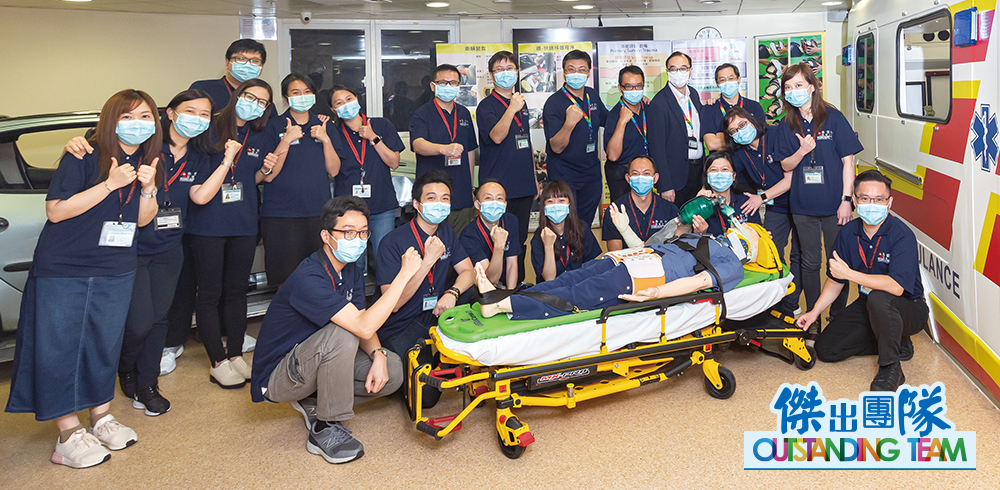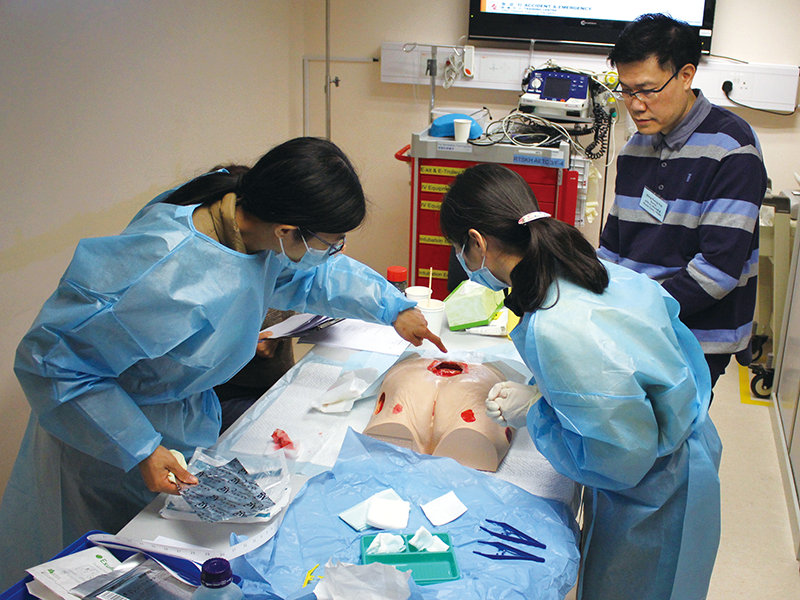AETC nourishes our future healthcare professionals
Accident & Emergency Training CentreRuttonjee and Tang Shiu Kin Hospitals
In 1994, the development of emergency medicine in Hong Kong was still at a nascent stage. Six accident and emergency (A&E) specialists who had received specialist training overseas and a clerical staff established Hong Kong’s first Accident & Emergency Training Centre (AETC) in a small ward at Tang Shiu Kin Hospital. Dr Cheung Wai-lun, former Director (Cluster Services) and Dr Lau Chor-chiu, former Cluster Chief Executive of Hong Kong East Cluster were among the six pioneers. Adhering to the teaching motto ‘Accessible, Educational, Transferrable and Capable’, AETC has opened up new horizons for training in emergency medicine.
Always keeping pace with social change and medical development, AETC offers extensive and suitable courses to trainees. Taking the intravenous thrombolytic therapy for stroke patient as an example, Dr Wan Kuang-an, Associate Consultant of A&E Department explains that AETC promptly introduced from overseas the Advanced Stroke Life Support training course when the concept of ‘3-hour window to treat stroke patients’ was introduced a few years ago. Another example is that during the recent COVID-19 pandemic, the team joined hands with the Head Office to design a ‘Train-the-Trainer’ simulation training course on infection control for HA clinical colleagues. The training aims to enhance the techniques of handling high-risk medical procedures such as sputum suction, tracheal intubation and transportation of critically ill patients with a communicable disease in order to minimise the risk of infection.
In 2018/19, the AETC offered over 500 classes for a total of 61 courses with attendance of more than 12,000 students. Dr Axel Siu, Consultant of A&E Department explains, “Practice makes perfect. Simulation training has given trainees opportunities to consolidate their skills and build up their confidence in applying those skills in real-life scenarios. Trainees can also reflect their strengths and weaknesses in medical knowledge and techniques through simulation training, in a way boosting their confidence in handling clinical cases at work.”
The demand for healthcare services has been escalating due to population growth and ageing, and so is the necessity for more professional training with a view to bolstering patient care. Dr Kan Pui-gay, Chief of Service of A&E Department, as well as the leader of the AETC team, shares that the team in future will extend simulation training to more allied health colleagues. In addition, the team will continue to work closely with the Institute of Advanced Nursing Studies to promote, design and provide simulation training for the various nursing specialties. AETC will also conduct research to evaluate the effectiveness of simulation training on the nurses’ clinical performance. In long run, to support colleagues’ professional development, the team plans to collaborate with other training centres in the cluster to establish an Integrated Centre for Innovation and Training in Hong Kong East Cluster, offering diversified courses to medical, nursing and allied health professionals from different disciplines.
Groundbreakers
Every Second Counts
Enlightening the Next Generation
Mighty Support
Voices of Experts


